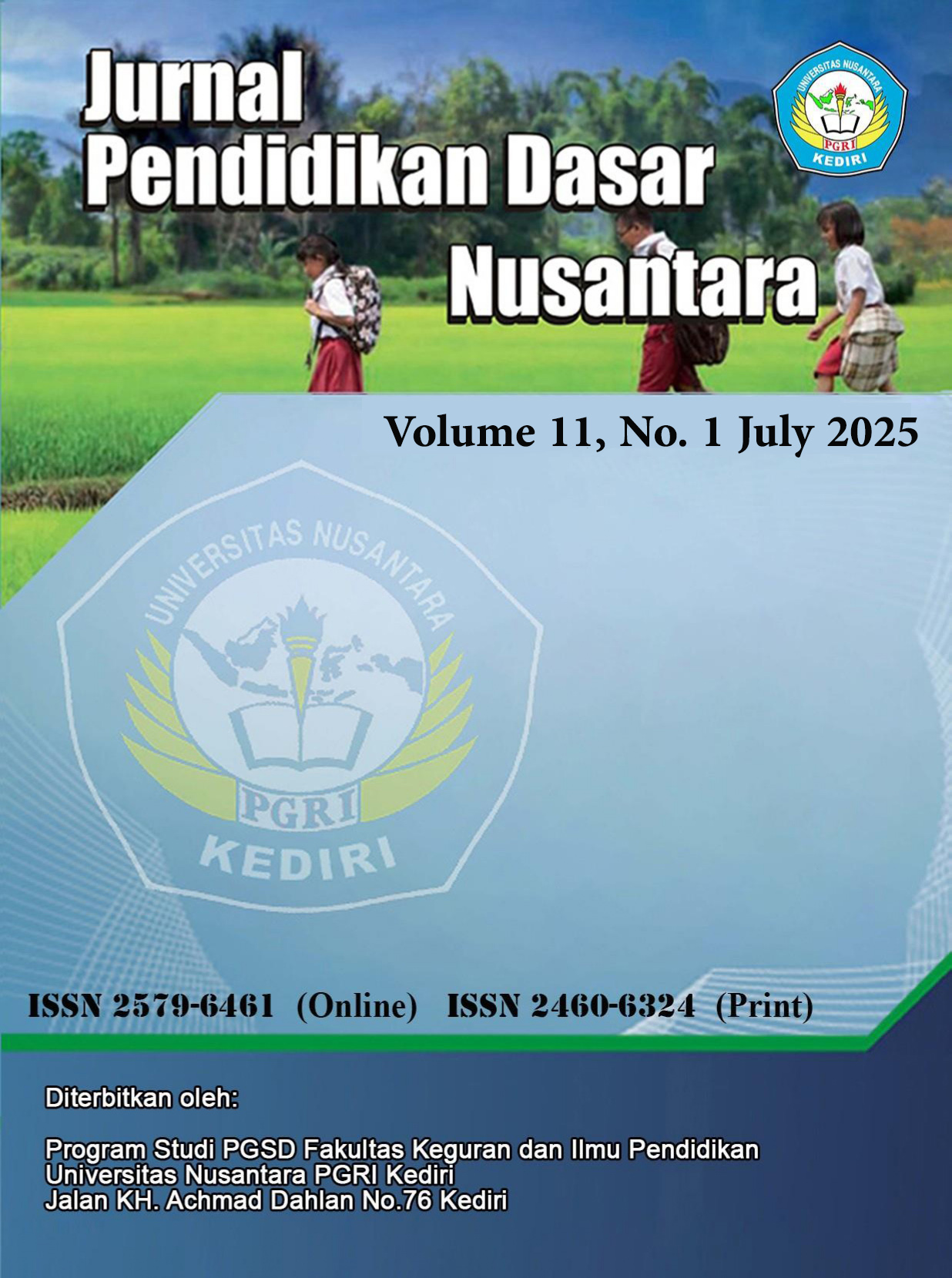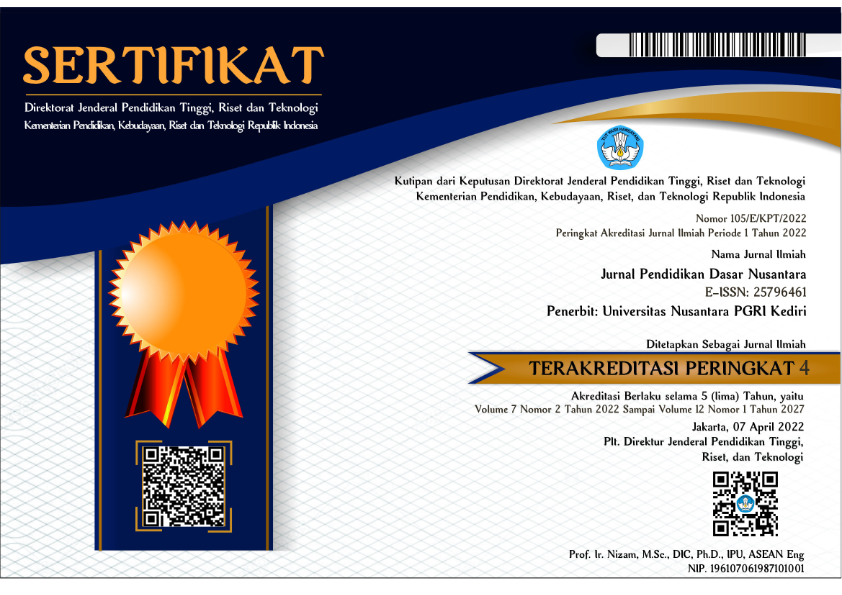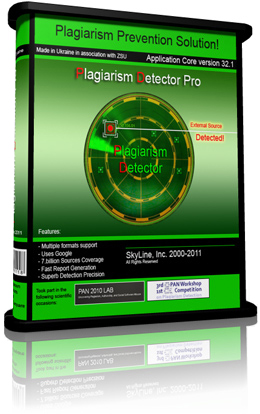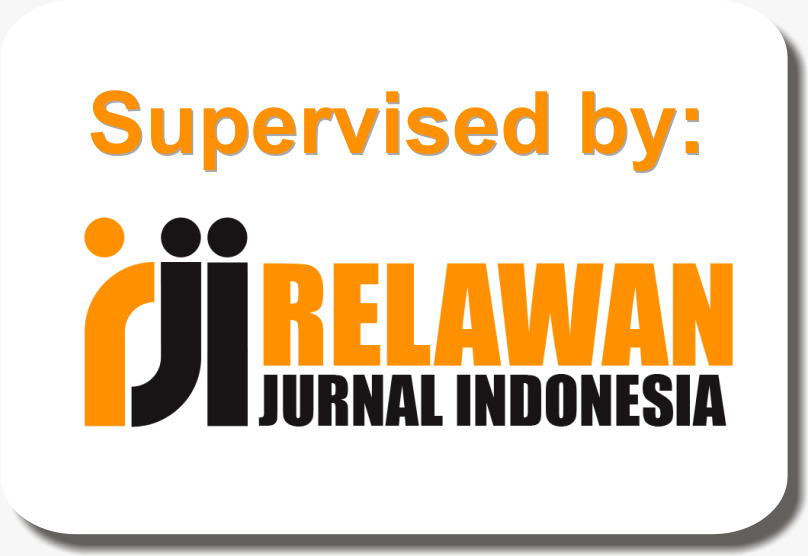The Influence of Using Animated Video Media on Students' Motivation and Understanding in Science Learning in Grade V of SD Negreri 29 Kota Pagar Alam
DOI:
https://doi.org/10.29407/jpdn.v11i1.25154Keywords:
Video Media, Learning Motivation, Student Understanding, IPAAbstract
This study aims to determine the effect of using learning videos on the motivation and understanding of science concepts of elementary school students. The study was conducted using the Classroom Action Research (CAR) model in two cycles at SD Negeri 29 Kota Pagaralam, involving 30 fifth grade students. The results showed an increase in learning motivation and understanding of concepts after using learning videos. In cycle I, most students did not understand the material well, but in cycle II there was a significant increase in both student participation and learning outcomes. Learning videos have been proven to be able to create a more interesting learning atmosphere and help students understand abstract science material.
Downloads
References
Ciptaningtyas, W., Mukmin, BA, & Putri, KE (2022). Canva-Based Interactive E-Book as an Innovation in Learning Resources for Human Digestive System Material for Grade V Elementary School. Journal of Elementary School Thinking and Development (JP2SD), 10(2), 160–174.
Dhori, M., Muqowim, M., & Nurhayati, T. (2021). Analysis of the Use of ICT with Applications in Online Learning at SD N 17 Kayuagung. Equilibrium: Journal of Education, 9(3), 278–283.
Fahri, MU (2020). Utilization of video as a learning medium. OSF.
Harefa, NAJ, & Hayati, E. (2021). Indonesian language and literature learning media and information technology. Angewandte Chemie International Edition, 6(11), 951–952.
Hasriadi, H. (2022). Innovative learning methods in the digitalization era. Jurnal Sinestesia, 12(1), 136–151.
Irawan, T., Dahlan, T., & Fitrianisah, F. (2021). Analysis of the Use of Animated Video Media on Students' Learning Motivation in Elementary Schools. Didactics: Scientific Journal of PGSD STKIP Subang, 7(01), 212–225.
Khusniawati, K., Nulhakim, L., Taufik, AN, & Sutarno, M. (2024). Development of E-Modules with Book Creator on the Theme of Body Metabolism to Help Visualize Science Concepts for Grade VII Junior High School Students. Journal of Mathematics and Natural Sciences Education, 14(1), 238–246.
Kotimah, EK (2024). Effectiveness of Audiovisual Learning Media in the Form of Powtoon-Based Animated Videos in Science Learning. Katera: Journal of Science and Technology, 1(1), 5–12.
Ngongo, VL, Hidayat, T., & Wiyanto, W. (2019). Education in the digital era. Proceedings of the National Seminar of the Postgraduate Program, PGRI University of Palembang.
Pagarra, H., & Idrus, NA (2018). The effect of using science learning videos on the learning interests of grade III students of SD Inpres Lanraki 2, Tamalanrea District, Makassar City. Journal of Educational Publication, 8(1), 30–40.
Pamungkas, WAD, & Koeswanti, HD (2021). The use of video learning media on elementary school students' learning outcomes. Scientific Journal of Teacher Professional Education, 4(3), 346–354.
Pratiwi, EM, Gunawan, G., & Ermiana, I. (2022). The Effect of Using Learning Videos on Students' Understanding of Science Concepts. Scientific Journal of Educational Profession, 7(2), 381–386.
Putra, IGNA, Kristiantari, MGR, & Wiarta, IW (2024). Appropriate and Effective Animated Video Media Applied in Elementary School Science Learning. Journal of Educational Research and Development, 8(1), 101–107.
Rahmawati, M., & Suryadi, E. (2019). Teachers as facilitators and student learning effectiveness. Journal of office management education, 4(1), 49–54.
Rahmayanti, L., & Istianah, F. (2018). The influence of using animated video media
on the learning outcomes of Class V students of SDN Se-Gugus Sukodono Sidoarjo. State University of Surabaya.
Sari, WN, Gustanu, P., Suprayitno, M., Etriya, R., & Aprilia, CA (2022). Application of Science Learning Videos in Improving Student Learning Motivation in Online Learning of Class V of SD N Pulorejo 02. JIIP-Scientific Journal of Educational Sciences, 5(8), 2795–2800.
Susanto, D., Jailani, MS, & others. (2023). Data validity checking techniques in
scientific research. QOSIM: Journal of Education, Social & Humanities, 1(1), 53–61.
Wahyuningsih, A., Faradita, MN, & Setiawan, F. (2022). Analysis of Video Usage
Science Learning in Limited Face-to-Face Learning at Muhammadiyah 9 Elementary School, Surabaya. INVENTA: Journal of Elementary School Teacher Education, 6(1), 52–64.
Wibowo, VR, Putri, KE, & Mukmin, BA (2022). Media development
Augmented reality-based learning on animal classification material for grade V elementary school. PTK: Classroom Action Journal, 3(1), 58–69.
Wulandari, AP, Salsabila, AA, Cahyani, K., Nurazizah, TS, & Ulfiah, Z. (2023).
The importance of learning media in the teaching and learning process. Journal on Education, 5(2), 3928–3936.
Zahroh, F., Apriyani, A., & Afrilia, Y. (2025). Analysis of the benefits of audio-visual media
animation as an effective learning material for elementary school children. Scientific Journal of Student Research, 3(1), 300–311.
Downloads
Published
Issue
Section
License
Copyright (c) 2025 Siti Nur Umi Hopsah, Muhammad Dhori, Lira Maria, Yusika Purnama Jelita, Ajeng Julia Pratiwi (Author)

This work is licensed under a Creative Commons Attribution-ShareAlike 4.0 International License.
Authors who publish with this journal agree to the following terms:
- Copyright on any article is retained by the author(s).
- The author grants the journal, the right of first publication with the work simultaneously licensed under a Creative Commons Attribution License that allows others to share the work with an acknowledgment of the work’s authorship and initial publication in this journal.
- Authors are able to enter into separate, additional contractual arrangements for the non-exclusive distribution of the journal’s published version of the work (e.g., post it to an institutional repository or publish it in a book), with an acknowledgment of its initial publication in this journal.
- Authors are permitted and encouraged to post their work online (e.g., in institutional repositories or on their website) prior to and during the submission process, as it can lead to productive exchanges, as well as earlier and greater citation of published work.
- The article and any associated published material is distributed under the Creative Commons Attribution-ShareAlike 4.0 International License
































